 Xi Chan Si Xi Chan Si
怡山西禅寺
 Xi Chan Si in Fuzhou was founded in the state of Liang, 梁朝, during the Northern and Southern Dynasty. Its name Xi Chan Si, 西禅寺, is the latest in the long history of the monastery. Xi Chan Si in Fuzhou was founded in the state of Liang, 梁朝, during the Northern and Southern Dynasty. Its name Xi Chan Si, 西禅寺, is the latest in the long history of the monastery.
The earliest known name was Xinshou, 信首, during the Northern and Southern Dynasty, 南北朝, (420 - 581). The monastery was destroyed at the end of Sui Dynasty, 隋朝, (581 – 618) During the Tang Dynasty, 唐朝, (618 – 907), the Inspector of Fujian, Lee Jin Wen, 李景温, invited Venerable Da An, 大安禅师, to restore the monastery. It was renamed Qing Chan , 清禅, Yan Shou, 延寿.
During the Five Dynasties period, 五代十国, (907 – 960), the court gave the name Chang Qing, 长庆, to the Monastery.
In 1038, the Song Emperor Renzong (仁宗), bestowed a new name: Yi Shan Chang Qing Si, 怡山长庆寺. It was later changed to Yi Shan Xi Chan Chang Qing Si, 怡山西禅长庆寺, as the monastery was located in the west and there were three other monasteries in the area called Nan Chan, Bei Chan and Dong Chan. It has been popularly known as Xi Chan Monastery, 西禅寺, ever since.
During reign of Qing Emperor Guang Xu (光绪), Venerable Wei Miao, 微妙禅师, initiated a major restoration from 1875 to 1879. Most of the physical structures in the Monasteries are dated to this period.
The monastery still has much material culture that reflects its long history. When Venerable Da An came to the monastery, he dug 7 wells, known as the Seven Stars well, that continues to function today. In the courtyard between the Front and Main hall stands a Lychee tree that dates back to the Song Dynasty,宋朝, (960-1279).
The various name change and imperial patronage from the Tang to the Song Dynasty signals the importance of Xi Chan Si as a centre of Buddhism in Southern China. Today, it is considered as one of the major monastery in Fujian attracting visitors from all over the world.
In recent years, Xi Chan Monastery expanded on its left wing with new structures added.
The Xi Chan - Shuang Lin Monastery connection
During the 1890s, Venerable Xian Hui, disciple of Venerable Wei Miao, left Xi Chan Si to study Buddhism in Sri Lanka, India and later visited Burma.
During his transit in Singapore, a chance encounter between Venerable Xian Hui and Mr. Low Kim Pong in Singapore led to the founding of Shuang Lin Monastery, 莲山双林寺, in 1898 (79 years after the founding of Singapore).
Because of Venerable Xian Hui's relationship to Xi Chan Si, the architecture style of Shuang Lin Monastery was modeled after Xi Chan Si. A pair of couplet in Xi chan Si was even reproduced inside the Main hall of Shuang Lin Monastery.
Links with Overseas Chinese community
The modeling of Shuang Lin Monastery after Xi Chan Si demonstrated how early migrants reproduced their cultural spaces as they moved outside of their homeland.
Meanwhile, many Venerables from Xi Chan Si went to serve in the Shuang Lin Monastery. Two of the most outstanding Venerables were Venerable Pu Liang, 普亮法师, and Venerable Gao Can, 高参法师, the 10th and 12th Abbot of Shuang Lin Monastery.
The relationship between Xi Chan Si and Shuang Lin Monastery offers an opportunity to understand the ways in which religious, spiritual and cultural capital was transferred from China to Singapore and the mechanics of cultural reproduction between China and Singapore and between different generations in Singapore.
Related articles:
|
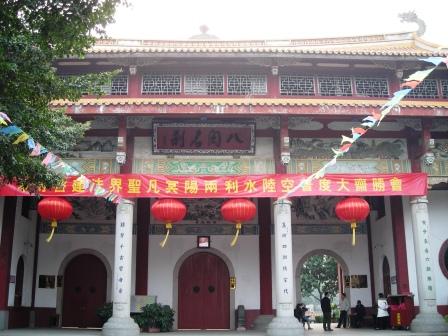
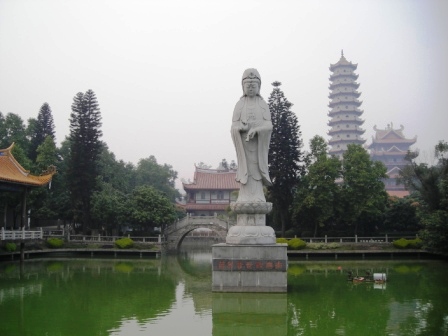
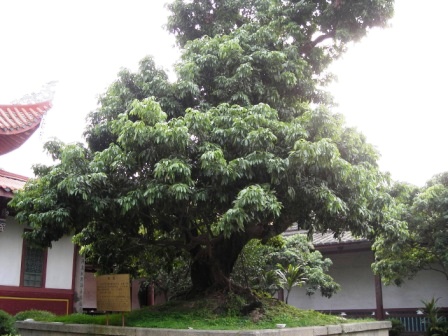
Anicent Lychee tree
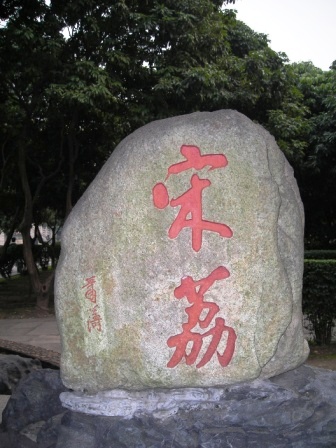

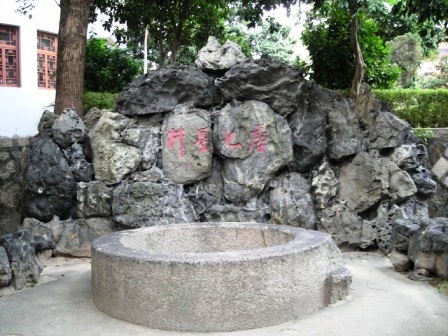
Seven star well
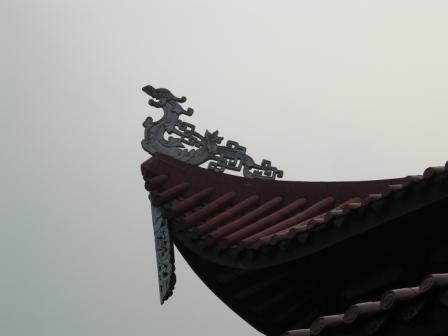
|

 Xi Chan Si
Xi Chan Si





